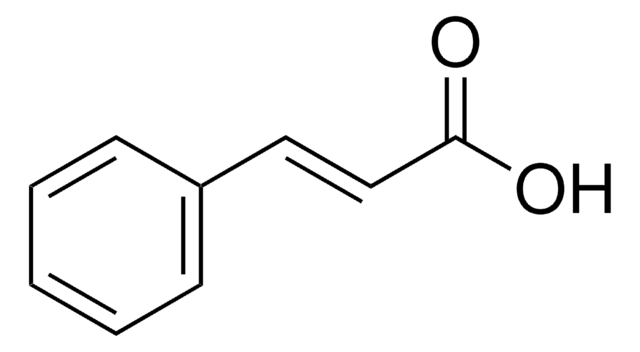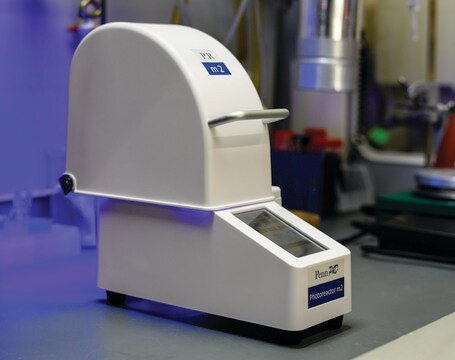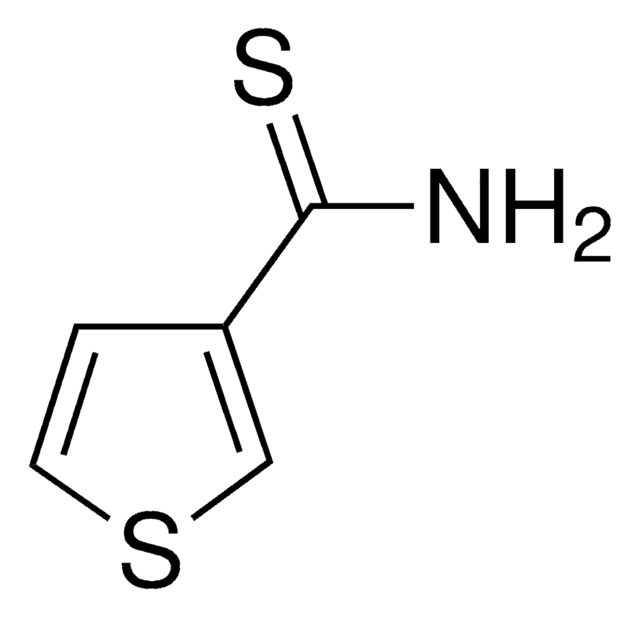D221201
Tetradecanedioic acid
99%
Sinônimo(s):
Dodecanedicarboxylic acid
Faça loginpara ver os preços organizacionais e de contrato
About This Item
Fórmula linear:
HOOC(CH2)12COOH
Número CAS:
Peso molecular:
258.35
Beilstein:
1788202
Número CE:
Número MDL:
Código UNSPSC:
12352100
ID de substância PubChem:
NACRES:
NA.22
Produtos recomendados
Ensaio
99%
forma
powder
pf
124-127 °C (lit.)
cadeia de caracteres SMILES
OC(=O)CCCCCCCCCCCCC(O)=O
InChI
1S/C14H26O4/c15-13(16)11-9-7-5-3-1-2-4-6-8-10-12-14(17)18/h1-12H2,(H,15,16)(H,17,18)
chave InChI
HQHCYKULIHKCEB-UHFFFAOYSA-N
Procurando produtos similares? Visita Guia de comparação de produtos
Palavra indicadora
Danger
Frases de perigo
Declarações de precaução
Classificações de perigo
Eye Dam. 1
Código de classe de armazenamento
11 - Combustible Solids
Classe de risco de água (WGK)
WGK 3
Ponto de fulgor (°F)
Not applicable
Ponto de fulgor (°C)
Not applicable
Equipamento de proteção individual
dust mask type N95 (US), Eyeshields, Gloves
Escolha uma das versões mais recentes:
Já possui este produto?
Encontre a documentação dos produtos que você adquiriu recentemente na biblioteca de documentos.
Os clientes também visualizaram
I Ziegler et al.
Blut, 44(4), 231-240 (1982-04-01)
Using the Crithidia assay 3.0 ng biopterin/ml blood was found, of which one third was present in the plasma. The erythrocyte fraction comprised 1.7 ng and the buffy coat 0.33 ng. After Ficoll separation 0.050 ng were found in the
Dolors Company-Arumí et al.
Phytochemical analysis : PCA, 27(6), 326-335 (2016-10-22)
Protective plant lipophilic barriers such as suberin and cutin, with their associated waxes, are complex fatty acyl derived polyesters. Their precise chemical composition is valuable to understand the specific role of each compound to the physiological function of the barrier.
Julien Herrou et al.
The Journal of biological chemistry, 293(19), 7437-7456 (2018-03-24)
The general stress response sigma factor σE1 directly and indirectly regulates the transcription of dozens of genes that influence stress survival and host infection in the zoonotic pathogen Brucella abortus Characterizing the functions of σE1-regulated genes therefore would contribute to
Chie Ohdoi et al.
Journal of chromatography. B, Analytical technologies in the biomedical and life sciences, 792(1), 123-130 (2003-06-28)
Lesch-Nyhan syndrome (LNS) is caused by a severe deficiency of hypoxanthine-guanine phosphoribosyltransferase (HPRT) and clinically characterized by self-injurious behavior and nephrolithiasis; the latter is treatable with allopurinol, an inhibitor of xanthine oxidase which converts xanthine and hypoxanthine into uric acid.
Nossa equipe de cientistas tem experiência em todas as áreas de pesquisa, incluindo Life Sciences, ciência de materiais, síntese química, cromatografia, química analítica e muitas outras.
Entre em contato com a assistência técnica













